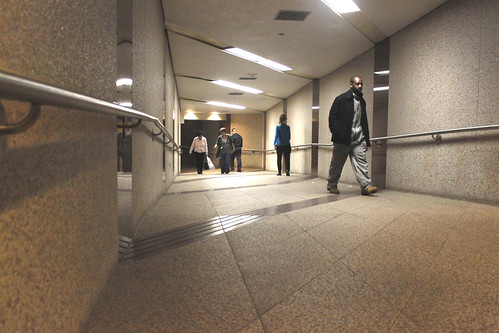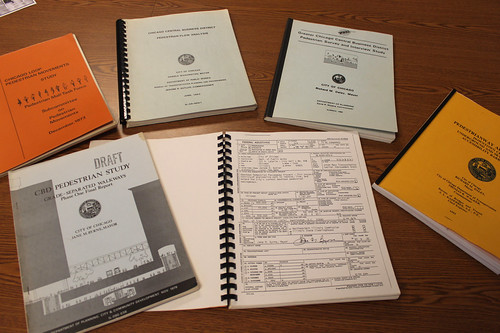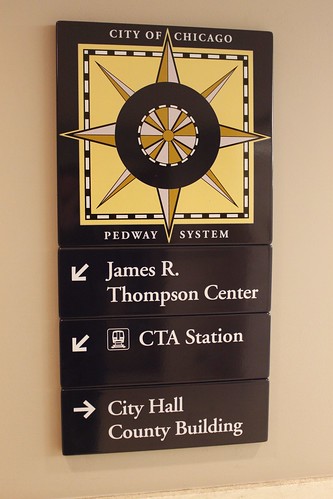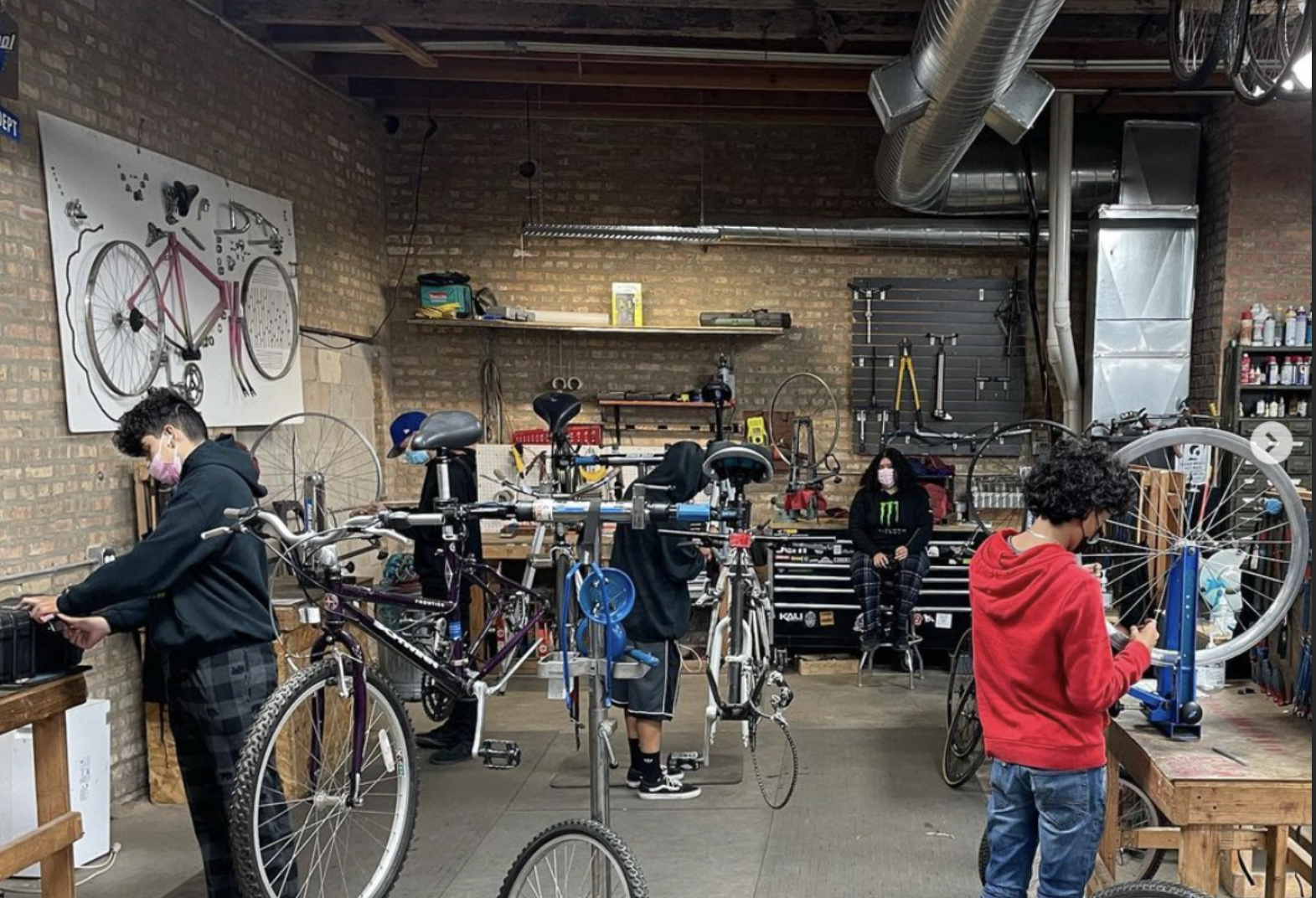Secrets of the Pedway: Behind the Scenes With CDOT Planner Susan Mea
4:24 PM CDT on March 26, 2013
Keith Griffith is a Chicago-based freelance writer and arts critic.
The Chicago Pedway, a warren of corridors connecting over 50 downtown buildings with Metra and CTA stations, can be baffling to navigate. But with dozens of private owners controlling different sections, administering the system might be an even bigger challenge.
Susan Mea, a veteran planning coordinator at the Chicago Deparmtent of Transportation, has worked on that challenge for the past 20 years. She sat down with Streetsblog to talk about the deals CDOT makes to keep the system running, funding challenges, and the city's new Pedway map.
Keith Griffith: How did you first get involved in working on the Pedway?
Susan Mea: I started working at the Department of Public Works in 1988. We had just completed the Randolph Street pedway, that segment that runs through what was then Marshall Fields—now Macy’s—and we needed to put in graphics, maps and signs. In 1992, when our department became CDOT, my new boss, Luann Hamilton, asked me to work on that as one of my first projects. There's a saying in city government—the moment you touch a project, it's yours for life. It's kind of fun to work on, though.
KG: Were you involved in any Pedway construction? How much of it was built by the city?
SM: The department's major building-of-pedways phase was mostly before my time, and the links that have been built since the early 90s have been mostly private construction. But before I started, the city built the section running from the Red line—which was then called the Howard/Dan Ryan—to the Cultural Center. We also built the one between City Hall and 120 North LaSalle.
Then there was the famous one between City Hall and the State of Illinois Building, it was a bit of a scandal about 25 years ago. The city and state contractors built their own parts of the tunnel from either side of Randolph and unfortunately did not meet in the middle, from what people who worked on it told me. We have something called the Chicago City Datum, which is kind of like zero elevation, and all construction documents need to reference that. Somehow, one of sides did not get the datum line right, so they built a ramp in the middle, and you can see it there today.
KG: I've always wondered about that. Overall, who owns the Pedway?
SM: Different parts are owned by various and sundry entities, like Cook County, the city of Chicago, private developers, Metra, Chicago Park District. Anything under the under or above the street is typically city right-of-way. With some exceptions, the city owns that right-of-way above and below the street.
KG: So the city owns all of the Pedway sections under city streets?
SM: Not necessarily. It may be that the improvements are owned by the entity who built them. They own the what’s called “the improvements” – the physical building portion of whatever's contained within the envelope of the Pedway. But where the city owns the street right-of-way, a developer must apply for a grant of privilege from the city for any encroachments of the public way, above or below grade.
KG: That seems complicated. Can the city use that public right-of-way to keep private sections of the Pedway open for standard hours?
SM: If it's privately owned, the owners can control the hours. But we're very concerned that the Pedway stays open reasonable hours, so that people can get to where they’re going from transit—we want to encourage people to use transit.
So even though we can't necessarily impose hours on others, we use the plan development process to negotiate. That's when a developer wants to apply to change the zoning for a proposed project. For instance, with Block 37, we negotiated for the hours their Pedway section would remain open through that planned development process.
The city has leverage by allowing the developer to get density bonuses or other things they might want for their project, and we get certain things we want. We want development to happen, but we want it to be done smart.
KG: With so many private owners, is it a challenge to keep the hours consistent?
SM: [Laughs] I have a whole stack of legal agreements that show what's been agreed to, for instance, for Macy's, for the State of Illinois, for 120 North LaSalle. The alderman [Brendan Reilly, 42d Ward] has been anxious to make sure that the pedway remains open certain days, specifically in the area that leads from the theater district to Metra. So Alderman Reilly's office has coordinated meetings with city departments, Macy’s, Metra and the Chicago Loop Alliance, making sure that we are on the same page, and the pedway remains open and is properly maintained.
KG: On the subject of Pedway maintenance, I looked through the city's 2013 budget ordinance last night, and couldn't find any appropriations for the Pedway. Where does that money come from?
SM: I think, for those portions of the Pedway maintained or owned by the city, it would be contained within the operating budget for Fleet and Facilities Management. For instance, two years ago they repainted the portion in Macy's and put in new lighting fixtures.
KG: You recently updated the official CDOT Pedway map. What are the main changes, and how'd you approach the update?
SM: We based it on graphics that had already been produced, so it was not a big job at all. I did walk through all of the system, and that's a matter of finding the time, but it needed to be done. So I took a clipboard and went out and just tried to determine which parts of the old map were outdated. I was primarily concerned with the area around Lakeshore East and Aqua.
KG: Any budget challenges for that work?
SM: Getting the new maps up in the Pedway is a small-budget challenge, so we'll have to do something a little different. I got an estimate from a company to make new signs, but we didn't have the money. So we'll probably be putting up paper copies temporarily.
We need to find a way for the public to see those new sections of the Pedway since the last maps were installed. But if there's no money, we have to do it in a creative way.
Stay in touch
Sign up for our free newsletter
More from Streetsblog Chicago
It’s electric! New Divvy stations will be able to charge docked e-bikes, scooters when they’re connected to the power grid
The new stations are supposed to be easier to use and more environmentally friendly than old-school stations.
Today’s Headlines for Tuesday, April 23
Communities United: Reports of Bikes N’ Roses’ death have been greatly exaggerated
According to the nonprofit shop's parent organization, BNR has paused its retail component, but is still doing after-school programming and looking for new staff.







